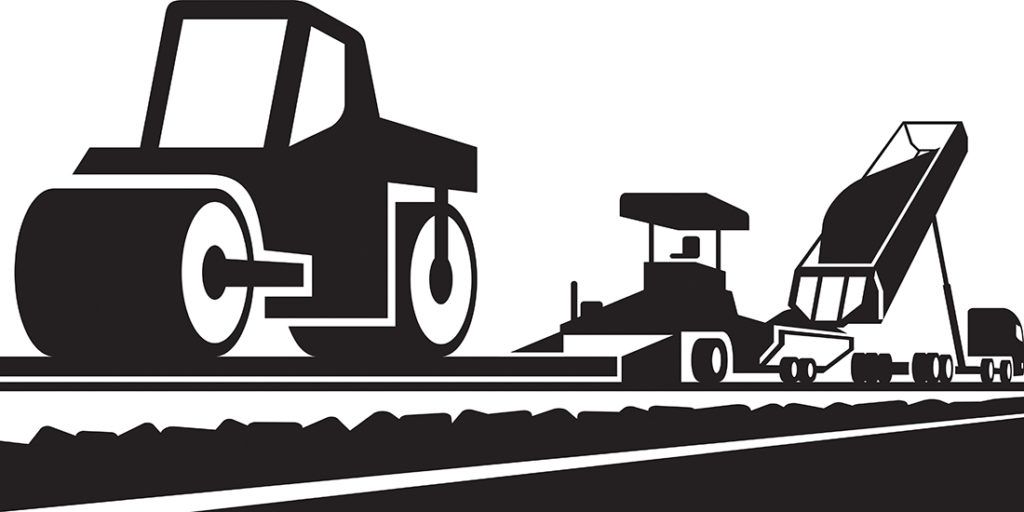Advice on What to Expect in Southwest Virginia from Paving Plus
Do you wonder about the complete step process for asphalt installation? If the idea of installing asphalt is new to you, it does help to know what to expect. In southwest Virginia, Paving Plus is always happy to answer customer questions.
However, trying to answer questions during the installation itself may not be the best time. This is when our team is busy operating machinery, laying the asphalt, and ensuring a quality job. Questions from customers can distract our professionals from these important tasks.
Paving Plus installs, repairs, and maintains asphalt in southwest Virginia every day. You might say the asphalt installation process is like second nature to us. So this month, we lay out the complete step process for asphalt installation. With this advice, you will know what to expect when you see our crew members in action.
The Steps to Asphalt Installation: Step One – Evaluate and Prepare
The step process for asphalt installation begins by evaluating and preparing the land area where we will lay the asphalt. Depending on whether we are installing a road or driveway, this may differ slightly.
For example, if we are installing over an existing driveway, we can expect there to be light or minimal vehicle use. It may have daily use, but the types of vehicles would generally be limited to cars or pickup trucks. Roadways, in comparison, must be prepared for heavy vehicle use from trucks, buses, and more.
Depending on the area, there may be some element of demolition and removal. This may consist of possibly scoring an existing surface to roughen it or removing debris. These steps prepare the surface for additional steps to come.
Step Two Involves Grading and Sloping for Drainage
The second part of the step process for asphalt installation takes a look at water. We understand that standing water is not a friend to asphalt. Water can seep into cracks in the pavement and weaken the sublayers below. This is why grading and sloping is a vital step in helping to maintain the integrity of the asphalt installation.
Our region in Virginia can experience a variety of precipitation. It may be springtime rain or winter snow, but this water needs to move. Roadways have gutters that lead to sewers. Residential driveways must often consider drainage from the roof of the home.
The proper grading and sloping of the driveway is a critical second step. It ensures the water has a place to flow away from the structure to the street. Keeping water moving with proper grading and sloping ensures fewer problems over the life of the pavement’s use.
Preparing the Sub Base Layer is Installation Step Three
As we said in step one, the paving area will determine the preparation. This includes whether it requires a sub base layer. If we install over an existing concrete or gravel driveway, that layer of material may be adequate as a sub base.
If we install asphalt over a dirt base, then we generally must include a layer of gravel to help build and hold the surface of the pavement structure. We must place this added layer of material in such a way that it lifts and slopes properly.
Working with a rough sub base and before installing the asphalt, we also apply a binder or prime coat. This tacky material serves to both seal and adhere the sub base to the asphalt. The tack coat keeps the sub base and asphalt layers secure.
Step Four is Installing the Layer of Asphalt Paving Material
Once we properly prepare with these first three steps, our crews can then install the layer of asphalt paving material. This includes spreading a layer of the aggregate over the prepared surface. We install the asphalt layer using various mixtures, temperatures, and in varying thicknesses. According to the Asphalt Institute:
“Mixes must be placed and compacted before they cool to 185° F., so the minimum temperature will depend on the temperature of the layer upon which it is being placed as well as ambient conditions. …Generally, agency specifications will spell out a minimum acceptable temperature for the mix. Some specifications will use 225° F., and others may use 250° F.”
How many inches of thickness we install also depends on the use of the pavement. In many cases, the asphalt layer may only consist of about two inches of material. This common amount allows for proper compression with rollers and pavers.
Step Five of the Process for Asphalt Installation is Compaction
Again, depending on the project, compacting the asphalt may consist of a few parts. You may see paving crews installing asphalt using hand stampers and rollers to press and compact the asphalt. We generally employ this method for smaller patches where the larger paver may not reach.
Primarily, we rely on machinery to do the heavy job of compacting and surfacing the layer of asphalt material. The paver is a large machine designed to compress the asphalt and provide a smooth, finished surface. A hand roller also provides this same effect on a smaller scale. Crews may employ hand stamping tools around edges, drains, manholes, and more.
Due to the temperature of the asphalt, compaction is a very quick and demanding process. We must press the asphalt into place and ensure that the layer maintains its integrity as it cools. Proper compaction ensures the asphalt layer will cure effectively.
Step Six is Quality Joints and Transitions
Perhaps you have had the experience of driving in areas where road crews are working. Be sure to slow down around the warning signs of “uneven pavement.” This can include significant bumps into and out of the roadway that awaits paving.
Entering or leaving a driveway may be just as problematic or jarring without a smooth transition. There may be curbing in place or the layer between the roadway and driveway could be different. In either case, your vehicle’s suspension will feel the ‘bumpy’ difference.
To avoid eventual issues with vehicle maintenance, part of the asphalt installation process includes checking for quality joints and transitions. The experienced team at Paving Plus knows to factor in the many types of joints and places where the surface transitions to adjoining areas. This can include checking the edging, a final roll with the paver, applying some amount of sealant, and more.
Final Words from Paving Plus on Asphalt Installation Steps
A friendly reminder that the professionals at Paving Plus treat each asphalt paving installation as the unique job that it is. No two projects in southwest Virginia are ever exactly the same. If you have any concerns or additional questions, just give us a call.
Contact Paving Plus, in Christiansburg, Virginia, today at (541) 731-3000. Our professionals are happy to provide superior service to residential and commercial clients every day. Follow us on Facebook for more on the complete step process for asphalt installation.





